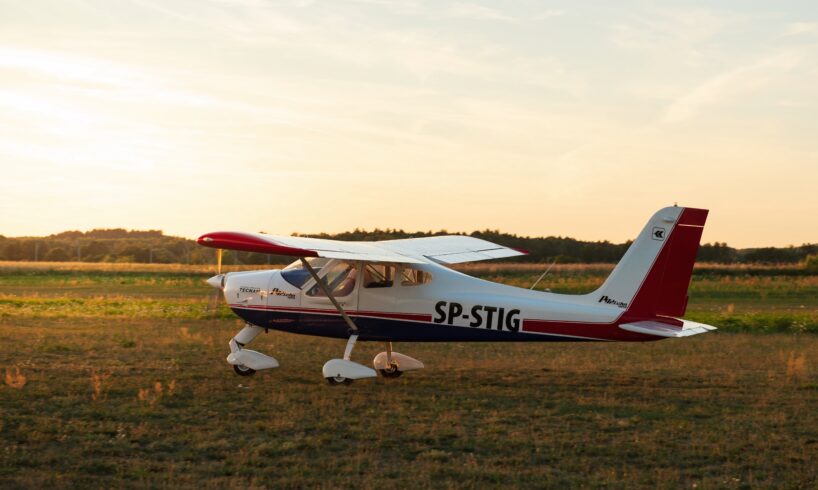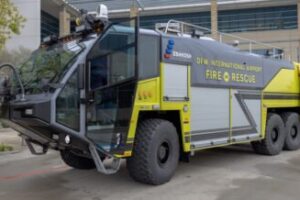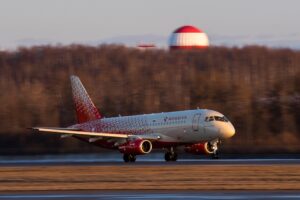
When Italian aircraft company Tecnam introduced its first aircraft, the P92 Echo, in 1993, it marked the beginning of a new era in light aviation. Designed with affordability, ease of use, and versatility in mind, the P92 not only launched the Italian manufacturer’s legacy but also became one of the world’s most iconic light sport aircraft (LSA), and the number one in Italy. Its approachable design and enduring popularity made the P92 a worthy subject for aviation history enthusiasts.
In this article, you’ll learn about the vision of its designers, the innovations that defined it, and how it became an icon for the Tecnam company. We will walk through its design origins, commercial rollout, and the various updates that followed over the decades.
Design Origins And Initial Concept
Photo: Antonio Di Trapani | Simple Flying
Tecnam’s journey began in 1986, founded by brothers Luigi and Giovanni Pascale, who had already made a name for themselves in Italian aviation through their earlier company, Partenavia. Established in 1948, Partenavia gained recognition for designing simple and efficient general aviation aircraft such as the P.68 light twin. However, after Italy’s shifting economic landscape and industry challenges led to Partenavia’s reorganization, the Pascale brothers decided to chart a new path. Hence, they decided to found Costruzioni Aeronautiche Tecnam to carry on their vision of accessible, high-quality aircraft. Tecnam was both a fresh start and a continuation of a lifelong dedication to aviation innovation.
Initially, the new company Tecnam (meaning Tecnologie Aeronautiche e Meccaniche – “Aeronautical and Mechanical Technologies” in Italian) was a subsidiary of Partenavia, but then it became the brothers’ leading company.
The Pascale brothers’ main desire was to bring innovation to the light aviation space. And to do this, they created their first aircraft from scratch, naming it Tecnam P92 Echo. They had in mind an aircraft that would be reliable, economical, and easy to fly. The light sport category was underserved at the time, especially in Europe, where pilot training schools and private flyers were looking for cost-effective alternatives but couldn’t find any. The brothers’ small gem had a good niche to fill.
Tecnam’s vision fits perfectly into this niche, and the P92 was designed from the beginning to be accessible, both in terms of cost and piloting skill. The P.92 Echo is a high-wing, two-seat plane that was officially classified as an ultralight. In reality, it performed more like a full-fledged aircraft, made with advanced lightweight alloys and composite materials that were rarely used in aircraft of this size at the time.
The P92’s design borrowed heavily from proven concepts in general aviation. Its high-wing configuration offered excellent visibility and stability, which is ideal for training and panoramic flights. With the help of engineers familiar with aluminum monocoque structures, the Pascale brothers created a simple yet robust airframe. Their focus on modularity and ease of maintenance would later become a distinctive trait of all Tecnam aircraft.
Tecnam’s exceptional engineering and craftsmanship resulted in a high-quality, high-performance plane that quickly gained popularity not only in Italy, but all around the world.
Related
A Closer Look At 6 Aircraft Produced By Tecnam
Tecnam is an Italian aircraft manufacturer that has developed several airplane models for the general aviaton sector
Development And Roll Out
Photo: Antonio Di Trapani | Simple Flying
Work on the P92 began in the late 1980s, and on March 14th, 1993, the first prototype took to the skies, with the head engineer Luigi Pascale in the cockpit. Early test flights confirmed what the Pascale brothers had hoped: the aircraft was not only easy to handle but also delivered reliable performance with minimal maintenance requirements.
The P92 was powered by the dependable Rotax 912 engine, a favorite in the light aircraft market for its efficiency and low operating costs.
During testing, Tecnam focused on refining the aircraft’s control responses, optimizing cabin comfort, and improving landing gear durability. Some changes were made to the wing design to ensure better lift characteristics, especially in training conditions.
The prototype proved durable and adaptable across various flying environments, from grass fields to paved runways.
Tecnam’s approach to the P92 emphasized trust and simplicity. The company aimed to create an aircraft that pilots could rely on – one that was not only affordable and easy to maintain but also enjoyable to fly. This pilot-centric philosophy resonated with early operators and flight schools, many of whom quickly recognized the P92’s potential as a practical and dependable trainer and touring aircraft. The aircraft has the following specifications:
Name
P92 Echo
Manufacturer
Tecnam
Seating Capacity
2
Wingspan
28 ft 7 in (8.7 m)
Empty Weight
620 lbs (281 kg)
Maximum Takeoff Weight (MTOW)
1,102 lbs (500 kg)
Engine
Rotax 912 – 80 hp
Maximum Speed
118 mph (190 km/h)
Cruise Speed
106 mph (170 km/h)
Service Ceiling
12,000 ft (3,660 m)
Range
270 NM (500 km / 311 mi)
Commercial Launch And Early Operations
Photo: Antonio Di Trapani | Simple Flying
The P92 officially entered commercial production in the 90s, and its first customers included flight clubs and pilot training schools in Italy and across Europe. Its simplicity, paired with a relatively low price point, made it a popular choice for small operators. In the following years, Tecnam expanded distribution into the United States, Australia, and Latin America.
Pilots appreciated the aircraft’s intuitive controls, fuel efficiency, and stable handling. Instructors especially valued the excellent downward visibility offered by the high-wing design, which made it ideal for flight training. Many new aviators took their first solo flights in a Tecnam P92, cementing its place in the memories of a generation of pilots.
While there were no significant incidents in the early years, Tecnam consistently gathered feedback from operators and pilots to make incremental improvements. These early customer relationships helped the company refine not only the P92 but also future models.
Related
Top 5 Single Engine Piston Aircraft for Flight Training
Most of the aircraft on the list are currently in production.
Evolution, Upgrades, And Variants
Over the years, the Tecnam P92 has seen numerous upgrades and variants. From the original P92 Echo, Tecnam introduced the P92 Eaglet, P92 Taildragger, a seaplane version, and more recently the P92 Echo MkII. Each version included aerodynamic refinements, improved avionics, and optional digital instrumentation for modern training environments.
These upgrades expanded the aircraft’s utility and appeal. Newer variants included features like glass cockpits, composite components, and upgraded landing gear for rugged operations. The MkII, introduced in the late 2010s, brought advanced ergonomics and enhanced performance while maintaining the core simplicity of the original design.
Demand remained strong among flight schools and recreational pilots alike. Tecnam has delivered thousands of P92s globally, and the model continues to evolve in response to regulatory changes and customer preferences. The company has also transitioned production from purely analog to integrated digital workflows, making the latest P92s ready for the next generation of tech-savvy pilots.
Later Years And Phase-Out
Photo: Antonio Di Trapani | Simple Flying
Despite being over three decades old, the original Tecnam P92 hasn’t been fully phased out. Older versions are gradually being replaced by newer models or used as second-hand trainers, but many are still in active service. Some flight schools have shifted to newer Tecnam models like the P2008, P-Mentor, and P96, but the P92 remains a reliable standby.
In many regions, especially in parts of Eastern Europe, South America, and Africa, the P92 is still used daily for flight training and short recreational trips. The original P92 was also used by the Royal Cambodian Air Force as a trainer.
Its parts availability and low operating cost ensure its continued presence in global skies. Tecnam supports these legacy aircraft with maintenance programs and spare parts.
Some P92 versions have found new life in specialized roles. Converted units serve as surveillance aircraft, aerial mappers, and even glider tow planes in some aviation clubs. The aircraft’s modular construction has made it easy to adapt for non-standard operations.
Related
Italian General Aviation: A Look At The Brief History Of Tecnam Aircraft
An aircraft manufacturer from humble beginnings.
Legacy And Lasting Impact Of The Tecnam P92
Photo: Antonio Di Trapani | Simple Flying
The Tecnam P92 holds a special place in aviation history as the aircraft that launched one of the most successful general aviation manufacturers in the world. It proved that innovation didn’t have to mean complexity, and that light aircraft could be reliable, affordable, and enjoyable.
The design philosophy of the P92 influenced nearly every Tecnam aircraft that followed. Its success also helped Tecnam develop global distribution channels and earn certification across multiple continents – an achievement that paved the way for models like the P2006T twin and P2012 Traveller.
Collectors and aviation historians regard the P92 as a milestone in light aviation. While there’s no formal revival on the horizon as long as more modern versions of this aircraft are available and in production, there’s significant interest in well-preserved early models. These aircraft can be spotted during fly-ins and general aviation airshows around Europe. These events often feature lovingly maintained P92s that continue to take to the skies.






